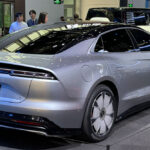Manhattan’s Ferrari dealership wraps around a corner near landmarks like the Seagram Tower and Lever House; its plate windows look in on the planet’s most glamorous cars, a gallery seemingly plucked from the nearby Museum of Modern Art. In his alluring “The Driving Machine,” architect and urban planner Witold Rybczynski illuminates the evolution of automative design, uncovering a story that reveals as much (or more) about us than the Ford Rangers and BMWs we shift into gear. The author begins midstream, in the Third Reich, when Hitler called for an affordable vehicle that any German family could own, a “volkswagen,” or “wagon for the people.
” Although Carl Benz made the first internal-combustion car in 1885, Germany lagged behind the rest of Europe in output. Rybczynski notes experimentation with other fuel options, such as kerosene and steam, but combustion engines triumphed on efficacy and speed. In those early years, many entrepreneurs rushed into the game on both sides of the Atlantic, designers and engineers played with form and function, borrowing elements from horse-drawn carriages as well as primitive airplanes, tinkering with an array of materials — wood, glass, metal — tapping the creative currents of the 20th century.
As Rybczynski opines, “Cars were becoming stylish artifacts to be appreciated visually, coveted, admired, even cherished.” “Driving Machine” serves up bite-sized anecdotes, some sweet, some savory, like a tasting menu: Hitl.


















